The Why of 1s and 0s
Lab: Big Picture of the Computing Machine
Video Runtime: 22:40
This episode explains why computers only understand 1s and 0s. You will walk through a thought experiment to help you understand.
Your key takeaways are:
- Computers work on voltage
- Computers cannot accurately, precisely, and consistently process analog signals
- Computers require the smallest amount of variability to be accurate
- 1s and 0s—or on and off—are the smallest degree
- Binary is the representation of complex numbers but in a 1 and 0 format
Study Notes
Problem 1: Feeding decimal numbers directly into the computer
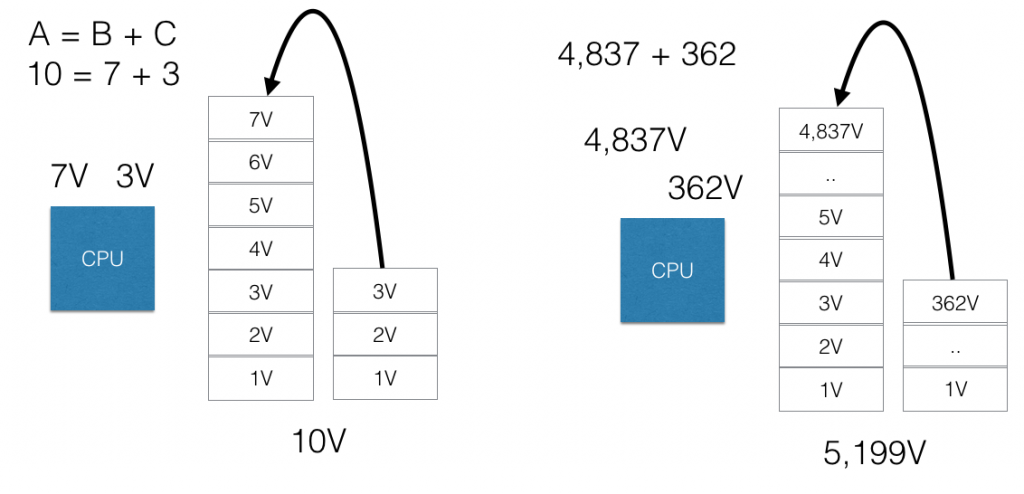
According to this picture, what happens when processing decimal numbers instead of 1s and 0s?
If we wanted to add 7 and 3, first we would load 7 volts into the computer’s brain. Then 3 volts is passed into the CPU. The CPU now sees 7V and 3V. Adding them together gives us 10 volts.
But what if we needed to add a larger number, such as 4,837 and 362? Imagine loading 4,837 volts into your computer and then another 362 volts. Your home’s power only supplies you with 100-240 volts.
What would you need to handle this kind of power?
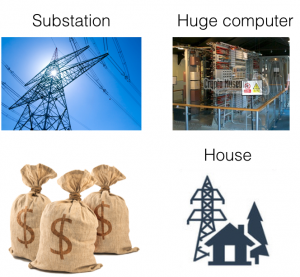
The size of the wires and components are relative to the amount of power being passed through them. Therefore, a computing system which uses decimal directly would require high voltage. As the numbers we need to compute increase, the power needs increase. This means you would need:
- A substation outside your home
- Large cables to your computer
- A huge computer
- Air conditioning to dissipate the heat
- Lots of money
Do you see the problem?
Summing it up, the problem with decimal numbers is:
- Huge numbers mean huge voltage
- Serious energy bills
- Far too high power requirements
- Too expensive to build
- Too expensive to run
- Too large to fit into your house
Problem 2: Capturing the real world’s continuous, infinite data
Audio Handling: Sound waves occur with the compression and expansion of air. The speakers in your headphones transfer sound to your ears by moving the speaker in and out—or vibrating the speaker cone. This vibration compresses and expands air molecules, which generate the sound we hear. The amount of vibration is proportional to the amplitude of the sound. In other words, the louder the sound, the higher the amplitude. Conversely, the softer the sound, the smaller the amplitude.
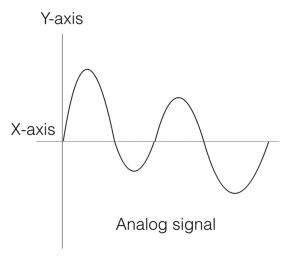 First, the audio file is converted into the voltage necessary. Then, your computer sends out an electrical signal through a wire to your headphones. This causes the magnet in the speakers to oscillate up and down with the volume of the sound.
First, the audio file is converted into the voltage necessary. Then, your computer sends out an electrical signal through a wire to your headphones. This causes the magnet in the speakers to oscillate up and down with the volume of the sound.
Voltage is an analog signal.
Plotting it on an X-Y graph, we see an analog signal.
However, analog is not actually feasible. Why?
- Infinite and continuous flow of information cannot be handled accurately (your computer only has so much memory; it can handle a finite amount of information)
- CPU trigger (clock)
- When the trigger occurs, it might process on 11.4 instead of 11.473
- Accuracy and precision are essential in computing
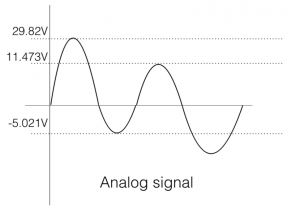 The primary problems with Analog are accuracy, precision and the size of memory needed to handle the continuous flow of information. See this video for reference.
The primary problems with Analog are accuracy, precision and the size of memory needed to handle the continuous flow of information. See this video for reference.
If analog does not work for us, then what do we need?
In a counting number system, what are the smallest units (hint: think in whole numbers)?
That’s right: 0 and 1.
Imagine a system where we convert numbers into the smallest number units and then combine those into a pattern:
5,199 = 4,837 + 362
4,837 00010010 11100101
362 00000001 01101010
External References for Further Study
Whoever says that coding is hard, just smack them.
Episodes
Total Lab Runtime: 00:37:11
- 1 Lab Introductionfree 35
- 2 Code to Circuitsfree 13:56
- 3 The Why of 1s and 0sfree 22:40
